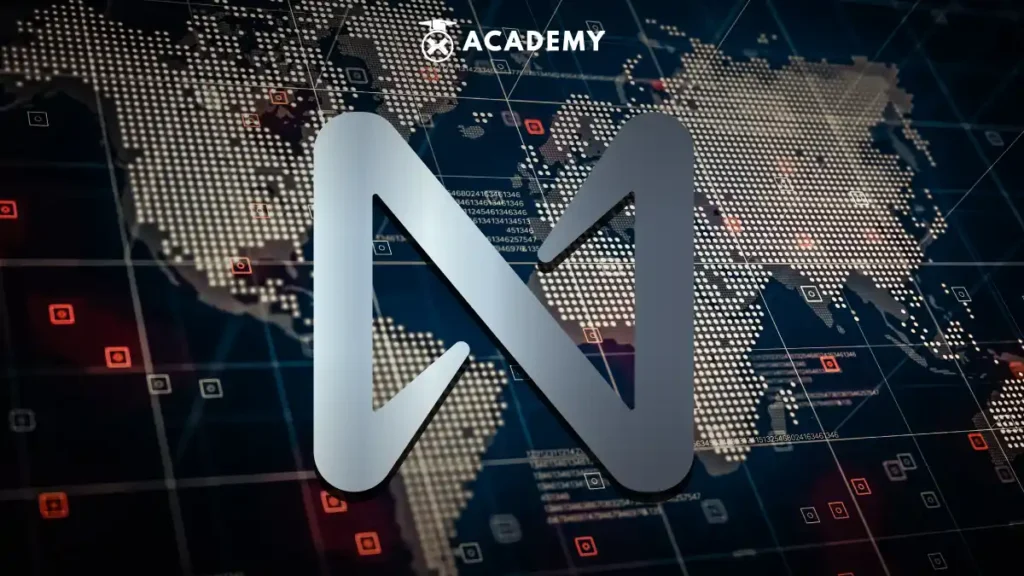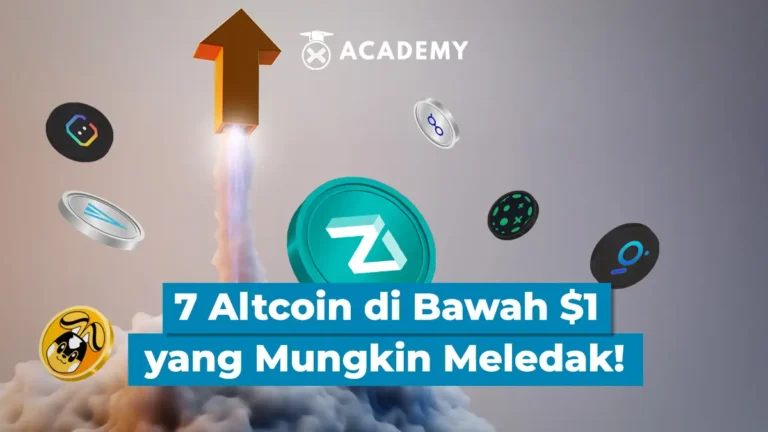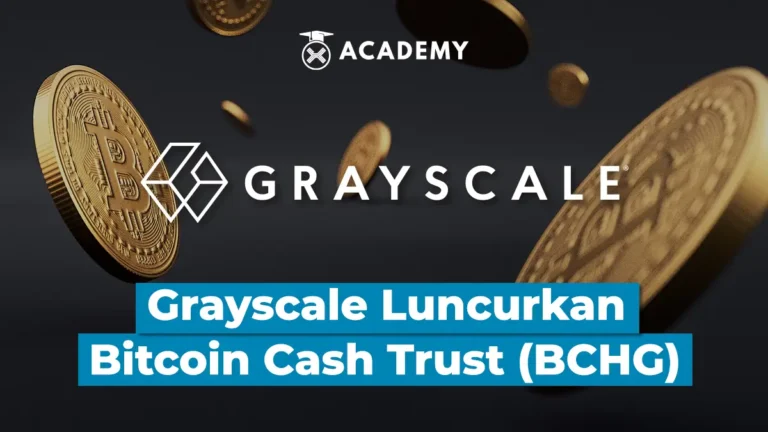In the current blockchain ecosystem, there are still several problems and challenges that occur, including low scalability, high transaction fees, and interfaces that are difficult to use. To overcome this problem, one of the solutions is Near Protocol.
As for the crypto ecosystem, Near Protocol plays a role in terms of scalability and efficiency, reducing high transaction costs, and focusing on developing user-friendly interfaces for dApps.
This blockchain platform also provides a strong infrastructure for developers to build decentralized applications, provides a high level of security for transactions and data in its network, and prioritizes interoperability with other blockchain networks and traditional financial infrastructure.
So, to better understand what Near Protocol is, the ecosystem, how it works, the Defi ecosystem application, and its uniqueness, see the full review below.
What is Near Protocol? (NEAR)
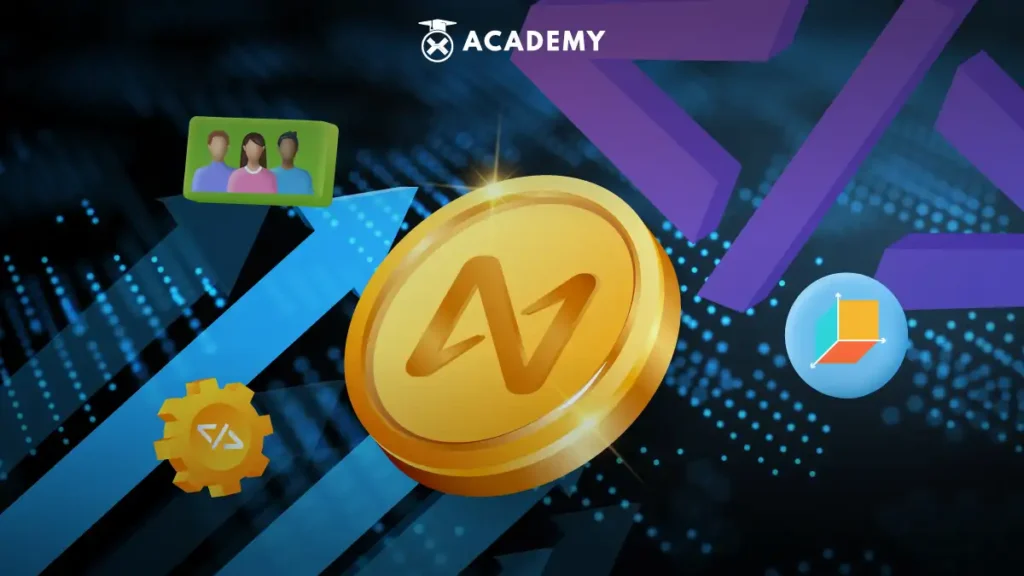
As is known, Near Protocol (NEAR) is a blockchain platform that aims to provide solutions to some of the main challenges in the blockchain ecosystem, such as scalability, high transaction fees, and complex user interfaces. This platform is designed to support decentralized applications (dApps) and smart contracts more efficiently.
Near Protocol leverages Proof of Stake for Work (PoSW) technology that combines elements of Proof of Stake (PoS) and Proof of Work (PoW) to achieve a high level of security and better scalability.
This allows Near Protocol to process thousands of transactions per second at a low cost. Apart from that, Near Protocol also focuses on developing simple and friendly user interfaces, as well as support for various programming languages, so that developers can easily build decentralized applications.
Historically, Near Protocol was founded by a group of individuals with backgrounds in technology and blockchain. Its creators include Illia Polosukhin, Alex Skidanov, and Dmitry Petukhov.
The development of Near Protocol started in 2018 with a vision to create a blockchain platform that could address key issues in the blockchain ecosystem at the time.
The team is working hard to design innovative architectures, such as PoSW, that can overcome the challenges of scalability and high transaction costs faced by other blockchain platforms.
Over time, Near Protocol began to attract the attention of the crypto community and investors. They have also been successful in raising funds through initial token offerings (ICOs) and venture funding.
To date, advances in technology development and a strong vision of the future of blockchain have helped Near Protocol become one of the most promising platforms in the blockchain ecosystem.
The Near Protocol Ecosystem
Please note, NEAR already has a fairly broad ecosystem. The main components in the Near Protocol ecosystem, starting from Wallet, DeFi, DAO, educational platforms, infrastructure for creating crypto, the Gaming Sector, NFT, Stablecoins, IDO Platform or Initial DeX Offering, and Oracle.
Within the NEAR ecosystem, there are approximately 136 projects. This figure is pretty good for a blockchain platform that has only been officially operating since 2021.
Another interesting thing about the NEAR ecosystem lies in the wallet it has. The reason is, NEAR has its own wallet platform, namely Near Wallet. The uniqueness of NEAR Wallet lies in its mechanism.
This is because the Near Wallet wallet address is not a cryptographic code, but can be changed free of charge according to the desired name. If you do this in another wallet, high fees are often required, so this is one of the added values of NEAR.
Besides that, NEAR also has a Decentralized Autonomous Organization (DAO) which can be used by owning NEAR Coins. The owner of the coin will later have the right to participate in decisions regarding the approval or rejection of new ideas in the Near Protocol.
Going forward, this DAO will also be the prime mover of NEAR. However, given that this is still relatively new, the board of directors here is still helping the decision for Near Protocol which keeps this platform moving in a semi-centralized manner.
Furthermore, in this ecosystem there is also a layer 2 blockchain called Aurora. Layer 2 also uses a sharding mechanism so that the speed is also high. Aurora is also able to accept tokens from Ethereum because it is compatible with the Ethereum Virtual Machine (EVM), which is a place for issuing smart contracts for Ethereum.
Then, there is also the Rainbow Bridge, which is a bridge between the Near Protocol and a number of blockchains. For information, Ethereum and Aurora are the blockchains that have so far been connected with the Near Protocol.
How Near Works
Before going into the discussion regarding how it works, it should be noted that in designing its network infrastructure, NEAR Protocol adheres to the following four principles:
Usability: Developers need to be able to create, test, and deploy contracts in an easy and familiar way to them in order to speed up the app building process. In addition, user interaction with the application must also be designed very easily and simply.
Scalability: The platform must have unlimited scalability.
Simplicity: The design of each system component must be as simple as possible in order to achieve its main function.
Continuous Decentralization: Finally, the barrier to participation as a validator must be kept as low as possible in order to create an inclusive ecosystem without compromising network security.
Taking into account the four principles above, here’s how Near works that you need to know, namely:
1. Sharding
Sharding is a blockchain architecture that allows each node (computer/server) involved in the verification process to store only a small portion of platform data.
This technology makes the blockchain data storage process divided into smaller shards, allowing them to be stored across multiple parties.
When doing so, sharding distributes the compute and data storage load across multiple nodes, which reduces the overall system load. Sharding is able to increase network speed and scalability without compromising security or decentralization. Therefore, it is one of the solutions to the blockchain trilemma problem.
Sharding technically minimizes network computational burden, namely by involving a group of validators at the same time in processing certain blocks. Later, each validator group is assigned its own shard chain.
The algorithm that determines the validator group is called a beacon chain, which has the task of coordinating the network as a whole. The beacon chain will assign validator groups to their respective shard chains according to a random selection algorithm so that the system is maintained.
2. Nightshades
Unlike general sharding systems, nightshade does not split a single blockchain into multiple shard chains. The nightshade system is known to break up the block creation process into a number of randomly determined groups.
Therefore, nightshade does not break the main chain, but each block is broken down into various small parts called chunks. Later, each validator is tasked with collecting chunks and forming them into a block.
In addition, Nightshade will break down complete information about system status and transaction logic on various shards into chunks. The goal is to ensure that each validator has no influence over crashing the system as a whole because they have only minimal information about the block being processed.
The nightshade technology allows Near Protocol to reduce the burden on the system when the network is experiencing congestion and improve security.
3. Auroras
As previously mentioned, Aurora is a layer-2 protocol that is compatible with the EVM, or Ethereum Virtual Machine. This network is also a NEAR Protocol bridge to the Ethereum network.
This is because NEAR does not have natural compatibility with other blockchains. Aurora will also solve NEAR compatibility problems because this network runs like a side chain in general.
However, unlike other Layer-2s such as Polygon (MATIC), Aurora will utilize all the technology and validators from NEAR and does not have its own crypto assets.
However, crypto application developers can build on the Aurora network. This is because Aurora allows an alternative network for developers who want to use EVM, but with NEAR’s low and fast transaction fees.
Get to know the Defi Ecosystem Application on Near Protocol
As a reminder, because it was just launched in April 2021, the DeFi and dApps ecosystem in NEAR is also one of the newest. In addition, the amount of funds locked in various DeFi applications at NEAR is also relatively small.
While the DeFi ecosystem in NEAR is still in its infancy, a number of projects are showing promise. The following are DeFi applications in NEAR that can be used, including:
1. Bastion (Aurora)
Bastion is the first decentralized savings and lending protocol on the Aurora network. This protocol uses an automated market maker (AMM) algorithm to determine various aspects of its application.
Meanwhile, Bastion’s default crypto asset is BSTN which is used as a governance token. Now, Bastion is the DeFi application with the largest TVL in Aurora, worth $447 million.
Like Curve, Bastion also plans to use the ve model in order to encourage competition for liquidity pool incentives. According to Bastion’s developers, Bastion’s ultimate goal is to become a source of liquidity for the NEAR ecosystem and to become the largest savings and loan application.
2. Trisolaris (Aurora)
Trisolaris is the first and largest decentralized money exchange (DEX) in the NEAR ecosystem. Trisolaris itself is modified from the SushiSwap protocol. Trisolaris is built on the Aurora network, so it has compatibility with all blockchains that have EVM.
Trisolaris is said to have a TVL of $268,000,000 as of April 18, 2022, or right behind Bastion. At Trisolaris, you can stake Trisolaris crypto assets (TRI), exchange crypto assets, and become a liquidity provider (LP) to get a sizable profit, which is equal to 30%–100%.
In addition, Trisolaris also plans to use the ve model (voting using tokens) popularized by Curve in order to attract more users and funds to its application.
3. Ref Finance (NEAR)
Finally, there is Ref Finance, which is a multifunctional DeFi protocol built on the NEAR network. This application allows you to do staking, exchange crypto assets, become a liquidity provider, and do farming all in one application. The default crypto asset is REF.
Ref Finance is said to be ranked first as a DeFi application with the largest TVL on the NEAR network, which is $ 175,000,000. Ref Finance’s unique features, including the cost of each pool of funds, can be modified by the liquidity provider that created it. Ref Finance itself is currently the largest multifunctional DeFi on the NEAR network.
Why is Near Unique?
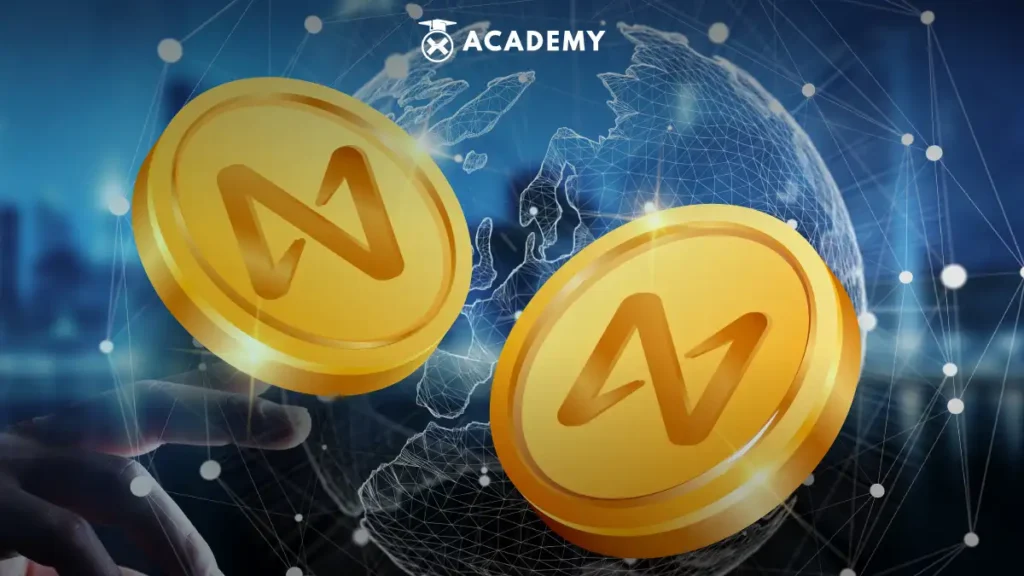
With all the features and conveniences it offers, NEAR is one of the blockchain platforms that is getting quite a lot of attention in the crypto ecosystem. However, what sets Near Protocol apart from other blockchain platforms? Here are some of its unique qualities, namely:
1. Transactions are faster and cheaper
The first uniqueness is that transactions are faster and cheaper by using the PoS network.
2. Nightshade sharding technology
Nightshade is a sharding technology that allows a blockchain to shrink and expand according to network density and the number of users. Nightshade will also make blockchain operations more efficient according to needs.
3. Received support from various large investors
NEAR is a blockchain that has significant backing from a number of institutional investors, among them CoinBase Ventures and A16Z.
4. Has a DeFi ecosystem
NEAR has a newly growing and evolving DeFi ecosystem. A number of financial application protocols are also in the process of being developed which can generate profits for investors who dare to invest in potential new projects.
5. Eco-friendly network
NEAR is one of the blockchains that has a climate neutral license. That means, the NEAR network is very eco-friendly making it more attractive to users who just want to use crypto assets with low carbon emissions.
Conclusion
In conclusion, the importance of Near Protocol in the crypto ecosystem lies in its role as a blockchain platform that addresses some of the crucial issues that often hinder the further adoption and development of decentralized applications.
What makes Near Protocol important, among other things, is that it uses a unique PoSW mechanism to address the scalability challenges common to blockchain networks. Apart from that, the transaction fees are also low, which is beneficial for the easy development of decentralized applications.
Furthermore, it is also important that you read more about Near Protocol and get involved in its community. Later, by involving yourself in the Near Protocol community, you can gain broader insights about the potential and opportunities that exist on this platform and become part of the transformation of the larger blockchain ecosystem.
How to Buy Near Crypto Assets?
So, now you understand what Near Protocol is, the ecosystem, how it works, the Defi ecosystem application, and its uniqueness.
As additional information, buying NEAR crypto assets can basically be a form of profitable investment, you know!
Therefore, if you are interested in buying Near crypto assets, you can buy them on the INDODAX market.
As for buying it on INDODAX, you can first enter the market page, then select the crypto asset Near to IDR. Furthermore, you can make purchases and get NEAR assets.
Come on, start investing in NEAR crypto assets right now at INDODAX!




